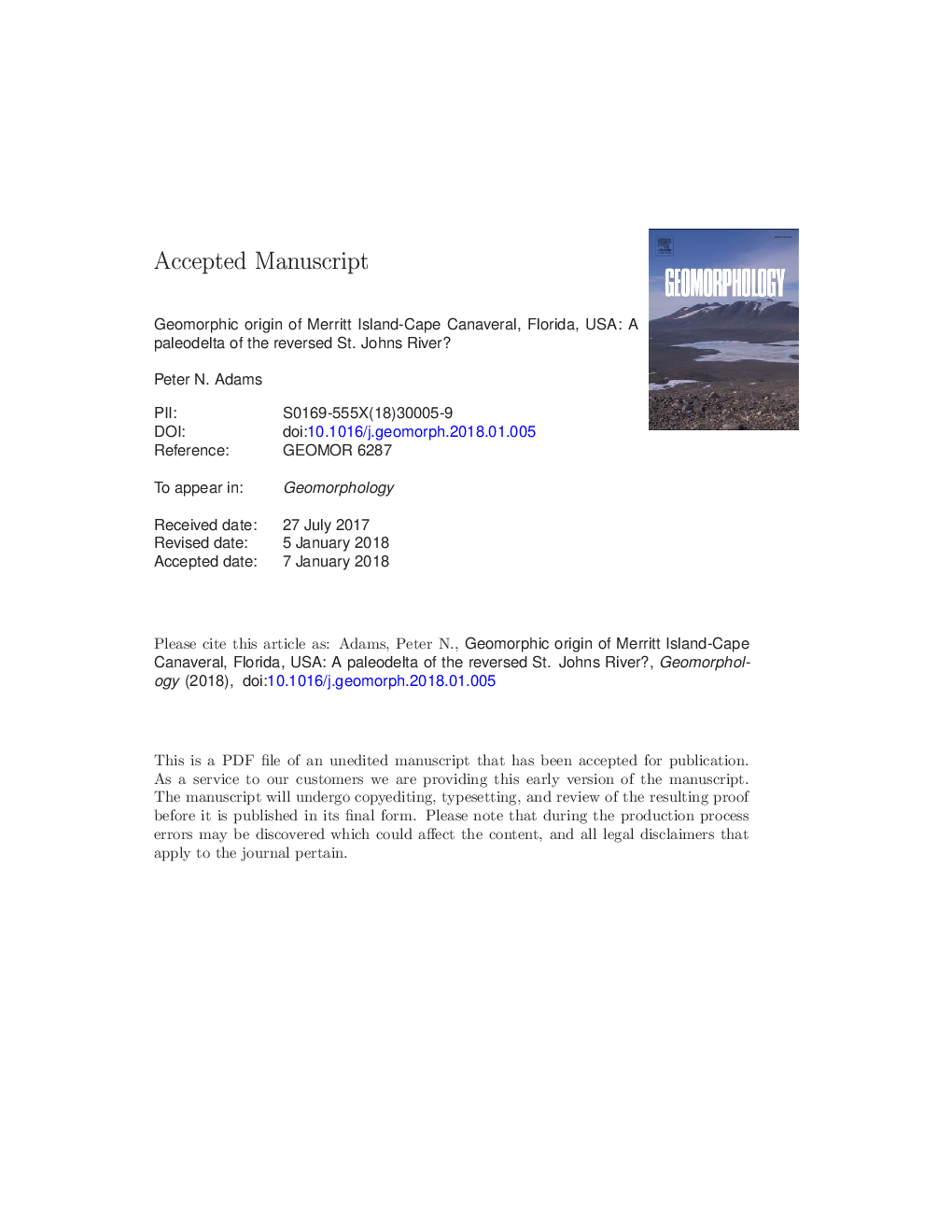| کد مقاله | کد نشریه | سال انتشار | مقاله انگلیسی | نسخه تمام متن |
|---|---|---|---|---|
| 8908121 | 1635344 | 2018 | 20 صفحه PDF | دانلود رایگان |
عنوان انگلیسی مقاله ISI
Geomorphic origin of Merritt Island-Cape Canaveral, Florida, USA: A paleodelta of the reversed St. Johns River?
ترجمه فارسی عنوان
منشاء ژئومورفیک جزیره مریت-کیپ کاناورال، فلوریدا، ایالات متحده آمریکا: یک دور از رودخانه سنت جانز معکوس
دانلود مقاله + سفارش ترجمه
دانلود مقاله ISI انگلیسی
رایگان برای ایرانیان
کلمات کلیدی
افزایش انعطاف پذیر، معکوس زهکشی، کارست، پالئولتا، کیپ،
موضوعات مرتبط
مهندسی و علوم پایه
علوم زمین و سیارات
فرآیندهای سطح زمین
چکیده انگلیسی
The Merritt Island-Cape Canaveral (MICCSC) sedimentary complex consists of a series of adjacent, non-conformable, beach ridge sets that suggest a multi-phase constructional history, but the feature's geomorphic and sedimentary origins are not well-understood. In spite of its notable sedimentary volume (surface areaâ¯=â¯1200â¯km2), the MICCSC lacks a clear sediment source, or supply mechanism, to explain its presence today. Previously published U/Th, radiocarbon and OSL dates indicate that beach ridge deposition was active during MIS 5 (130-80â¯ka) on Merritt Island, but has occurred over a shorter, younger time interval on Cape Canaveral proper (6â¯ka to present). In this paper, it is proposed that the MICCSC is an abandoned paleodelta whose fluvial source provided a sediment supply sufficient for coastal progradation. Although the MICCSC, today, does not receive an appreciable sediment supply, the nearly 23,000â¯km2 drainage basin of the St. Johns River may well have provided such a sediment supply during MIS 5 times. This low-gradient fluvial system currently empties to the Atlantic Ocean some 200â¯km north of the MICCSC (near Jacksonville, Florida) but may have flowed southward during the time of MICCSC sedimentary construction, then experienced flow reversal since MIS 5 times. Three possible uplift mechanisms are proposed to explain the northward down-tilting that may have reversed the flow direction of the St. Johns, abandoning deltaic construction of the MICCSC: (1) karst-driven, flexural isostatic uplift in response to carbonate rock dissolution in central Florida, (2) glacio-hydro-isostatic tilting/back-tilting cycles during loading and unloading of the Laurentide ice sheet during the Pleistocene, and (3) mantle convection-driven dynamic topography operating within southeastern North America since the Pliocene. This example testifies to the sensitivity of low-gradient, low-relief landscapes to various sources of uplift, be they isostatic or otherwise.
ناشر
Database: Elsevier - ScienceDirect (ساینس دایرکت)
Journal: Geomorphology - Volume 306, 1 April 2018, Pages 102-107
Journal: Geomorphology - Volume 306, 1 April 2018, Pages 102-107
نویسندگان
Peter N. Adams,
